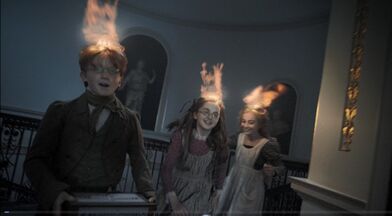
The story tracks a few years in the lives of the family from the time Charlotte is recovering from a hopeless infatuation with a married man, to the death of Branwell. Branwell is brilliantly played by Adam Nagaitis, and his slow self-destruction is a major part of the story, In fact, some reviewers have complained that there is too much Branwell in a film that is supposed to be about the Brontë sisters. Perhaps so, but the misery of the family during Branwell's fatal slide into addiction is an integral part of their lives. Charlotte biographer Claire Harman notes that the sisters knew that Branwell, being the only boy, was the favourite of his father. In the film, the girls look at their father with silent resignation when he expresses, yet again, his hope that Branwell will pull himself together. Branwell had the freedom to pursue many careers; he squandered all his chances.
Charlotte seethes with resentment at the restrictions placed on her by society, and Anne is worried about their precarious financial future...
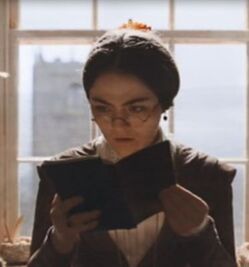
The house used in the filming is a replica of the original Brontë house, which was significantly altered after Rev. Patrick Brontë's death. As shown at the top of this post, the house faced the church graveyard and backed onto the moors--a grim surrounding, and yet the sisters hated living anywhere else, and whenever they had to leave home to earn money teaching, they suffered acute emotional and often physical distress.
The camera captures the streaks of the thick oil paint on the doors, the mud in the courtyard, the large flagstones in the hallway, which hurt Aunt Branwell's feet to walk upon. (Aunt Branwell is dead by the time of the movie but it is her legacy to the girls which made it possible for them to publish their book of poetry).
Rev. Brontë's study, where he spent most of his time, is across the hall from the dining room where the girls wrote and walked and talked at night, after he went to bed. In a world before central heating, the interior doors are usually kept closed. It is a household full of secrets and unspoken feelings.
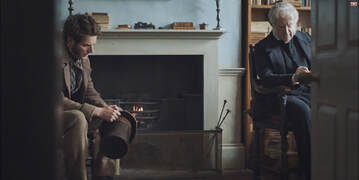
In one scene, the doctor comes after Branwell has had an episode of delirium tremens, and sits and talks to the Rev. Bronte in his study. The camera slowly pans across the door, looking in on the conversation from the hallway. The technique reminds me of the way Ang Lee also framed some conversations in Sense & Sensibility, showing Eleanor and her mother in their tiny cottage, while Eleanor talks about their reduced circumstances.
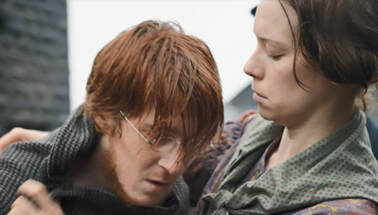
There is also the sweet, awkward interplay between Charlotte and her father's curate, who later became her husband.
There are so many wonderful scenes: Emily's furious anger at Charlotte when she discovers Charlotte has been through her things in her bedroom, contrasted with her compassion for Branwell.
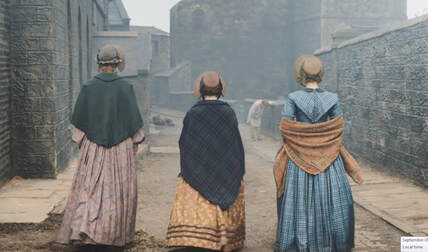
They are going to a house of worship, their father is the spiritual leader of the village and now they are reminded of the hopeless reality of their family situation. All of Haworth, of course, knows about the shortcomings of the minister's son.
Charlotte looks at him and then resolutely looks away. Anne looks pained and hurt. They pass him, continuing their walk, but then Emily stops, and goes back to help him struggle home.
Another realistic detail here: when the girls walk outside, the hems of their skirts brush the wet pavement and get dirty and muddy. You can see it on Anne's blue skirt in the photo above. They have to pick their skirts and petticoats up to go up and down stairs without tripping. Charlotte always seems to run impatiently up the stairs with her skirts in her hands and Emily sometimes tucks her skirt up when she is working outside in the courtyard. (I recently read that the medical discovery that germs, particularly tuberculosis germs, could be picked up from the sidewalk, is what led to the shortening of women's skirts to ankle height at the turn of the last century.)
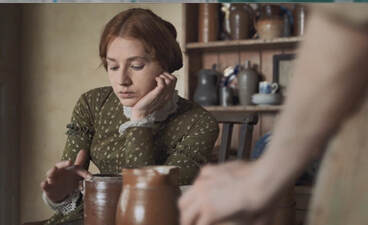
Emily makes the bread for the family, kneading the dough in a way which makes it obvious you wouldn't want to get on her bad side. Anne sits and chats with her, idly brushing flour off the rim of a ceramic canister as she talks.
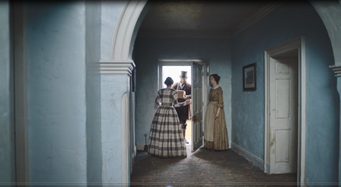
I think all the actresses do a wonderful job of showing the contrasting personalities of the sisters.
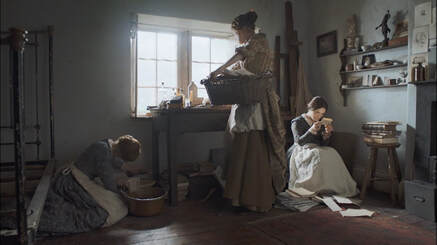
Charlotte appears to do the least amount of housework. (Apparently in real life she did lend a hand with sweeping and stove-blacking when Tabby was too ill to work). After Branwell has started a fire in his room, Anne is down on her knees, scrubbing the woodwork, Emily is picking up the empty bottles, and Charlotte is sitting and looking at her brother's papers and books--the least grimy job.
After Branwell's death, Tabby, Emily and Anne perform the ritual of washing the body. Charlotte sits downstairs in the dining room, weeping, Her father, who for years did not even dine with his children, sits weeping in another room.
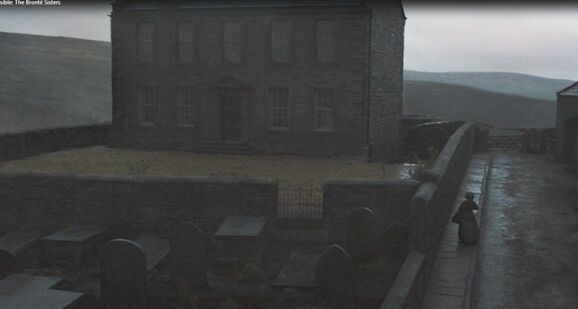
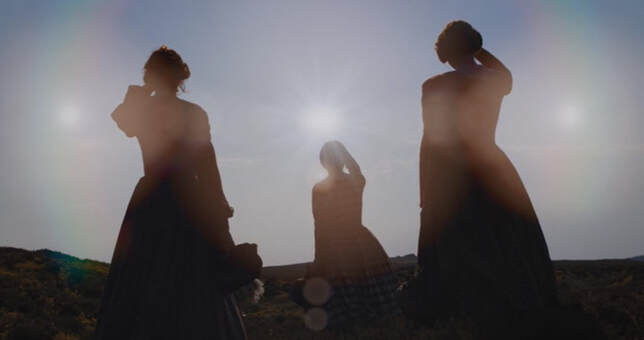
 RSS Feed
RSS Feed